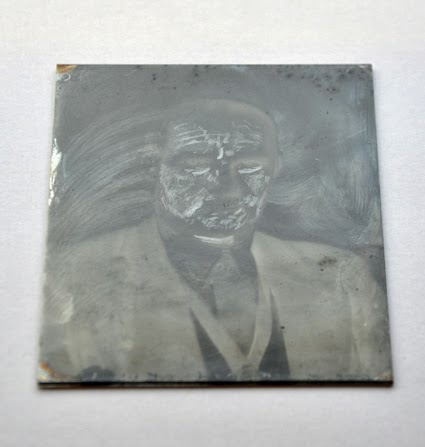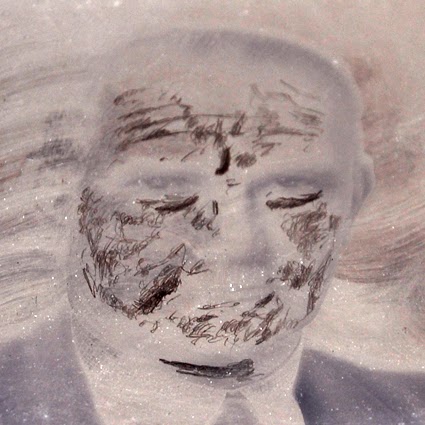Butter Wouldn't Melt!
Take a look at these two cherubs.I picked them up off the top a box in the cellar today. One of so many captured here in the studio over the years. It's difficult to date these but I'm hazarding a guess at 1940's to 1950's based on clothes and hairstyles. Later than this, and we would be moving into colour.
You can make out the word 'Peach' at the bottom of the image (most likely the familly name) along with other reference details. These were written directly onto the plate and relate to an entry somewhere in the ledger books.
The black blob (for want of a better word) on the left is where the emulsion has peeled away but it is a testament to traditional photography methods that the image remains almost wholly intact: how are you old CD's holding up?
The Lightest Touch
Another one from the pile - this image has got me hooked.Never mind airbrushing or Photoshop - look at the softness of the skin.
The light is gentle but exacting - the modelling highlights his features, his expression is serious but relaxed. What I find really exciting about this one though is the hand retouching directly on to the plate. Retouching was predominantly done by women (perhaps the extra colour receptors in our eyes make us more adept with detail?) Imagine the women working in a row in the daylight retouching rooms at the top of the building bent over these small portraits.
These images I am sharing are all on quarter plate glass negatives. A 'whole' plate is 8in x 6in so these are 4in x 3in, about the size of a polaroid. At this small size the retoucher had to work their magic knowing it would be enlarged when printed, magnifying their handiwork.
And what was this handiwork like? If you flip the plate over and tilt it to the light you can see!
 The swirls around the head are brush marks in the emulsion, the details that interest me are the marks on the face. With a bit of photoshop magic you can get a better idea of what is going on...
The swirls around the head are brush marks in the emulsion, the details that interest me are the marks on the face. With a bit of photoshop magic you can get a better idea of what is going on...
These pencil marks provide two services: the lighten areas, and they smooth out lines. Dark circles under your eyes? No problem! Deep set frown lines? Not any more! The head in the right hand side image is about to scale so you can see the accuracy needed.
And that's how you make a classic soft portrait without softening the focus - no need for a stocking over the lens :-)


No comments:
Post a Comment